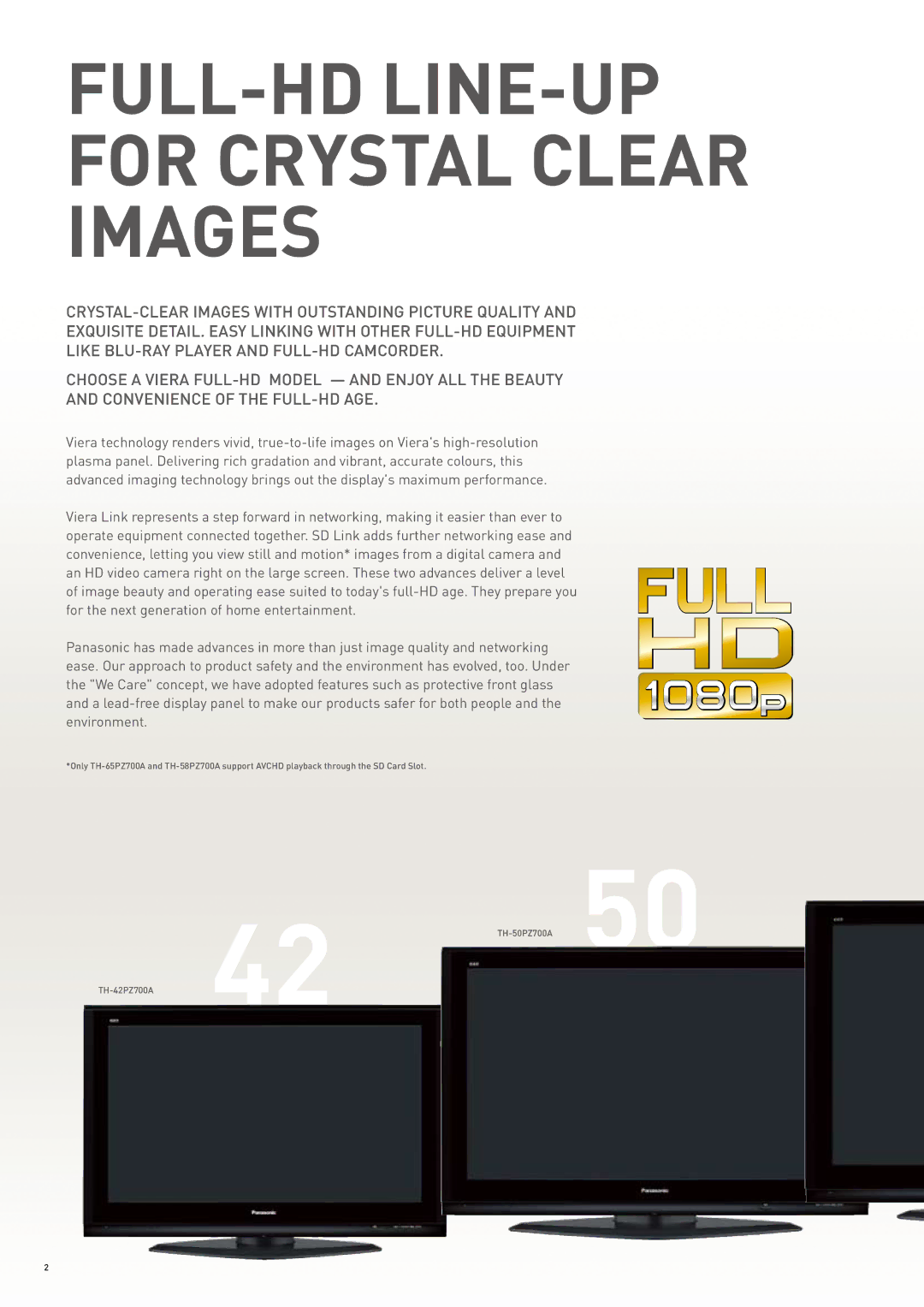2007-2008 specifications
In 2007 and 2008, Panasonic continued to solidify its position as a leading electronics manufacturer, showcasing a diverse portfolio of innovative products and technologies that catered to both consumer and industrial markets. The brand was heavily invested in the development of high-definition video technology during this period, with the introduction of its Plasma and LCD televisions, which marked a significant leap in visual quality and screen size.Panasonic's Viera line of plasma televisions gained acclaim for their vibrant colors and exceptional contrast ratios, providing viewers with stunning picture quality for a truly immersive viewing experience. These sets utilized the latest in plasma technology, which allowed for deeper blacks and more accurate color reproduction compared to traditional CRT televisions. In 2007, Panasonic also introduced its first Neo PDP technology, which further enhanced brightness and energy efficiency in plasma TVs, contributing to the brand's reputation for innovation.
The consumer electronics giant also made waves in the digital camera market with its Lumix series. In 2008, Panasonic launched several models featuring advanced optical zoom capabilities, image stabilization technologies, and the pioneering use of Leica lenses, which elevated the standards for compact digital cameras. The combination of user-friendly interfaces and high-quality imaging made Lumix a popular choice among photography enthusiasts.
During this era, Panasonic was also committed to sustainability and eco-friendly practices. The company introduced several environmentally friendly appliances, such as energy-efficient refrigerators that minimized power consumption while maximizing storage capabilities. These appliances were equipped with inverter technology that adjusted energy use according to the food stored and the external temperature, reflecting a growing trend toward energy conservation.
Additionally, Panasonic expanded its reach into the mobile phone market with the introduction of innovative smartphones featuring cutting-edge designs and functionalities. The development of unique features like high-quality cameras and multimedia capabilities positioned Panasonic phones as competitive options in an increasingly crowded market.
Overall, Panasonic's focus on quality, innovation, and sustainability in 2007-2008 resulted in a host of products that resonated with consumers. Through advancements in television and imaging technologies and a commitment to eco-friendly practices, Panasonic not only reinforced its brand image but also paved the way for further innovations in the years to come.

